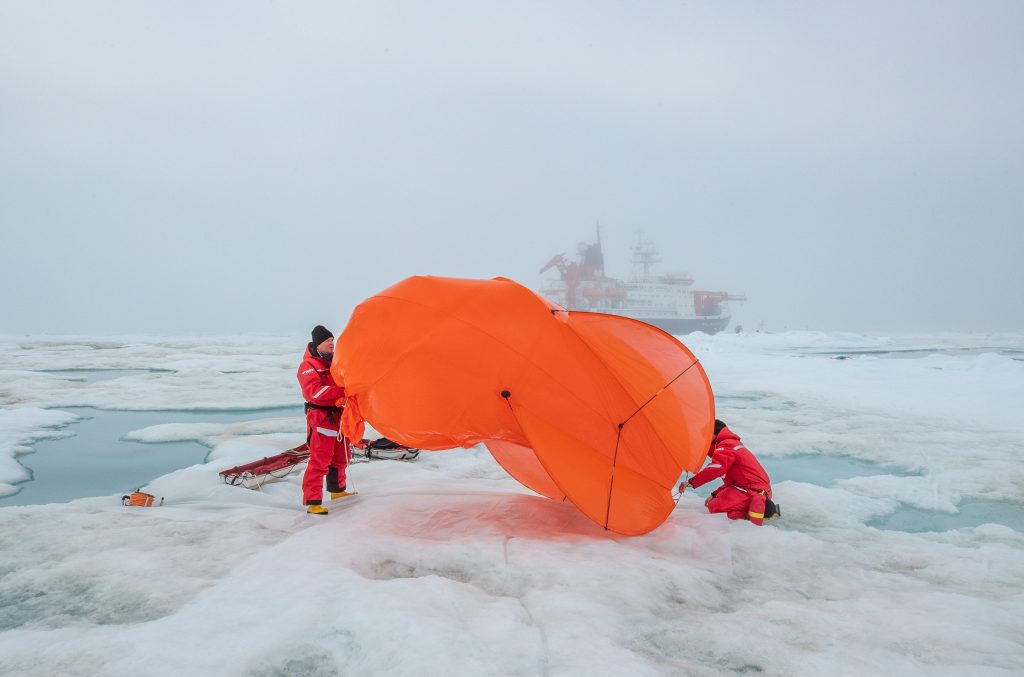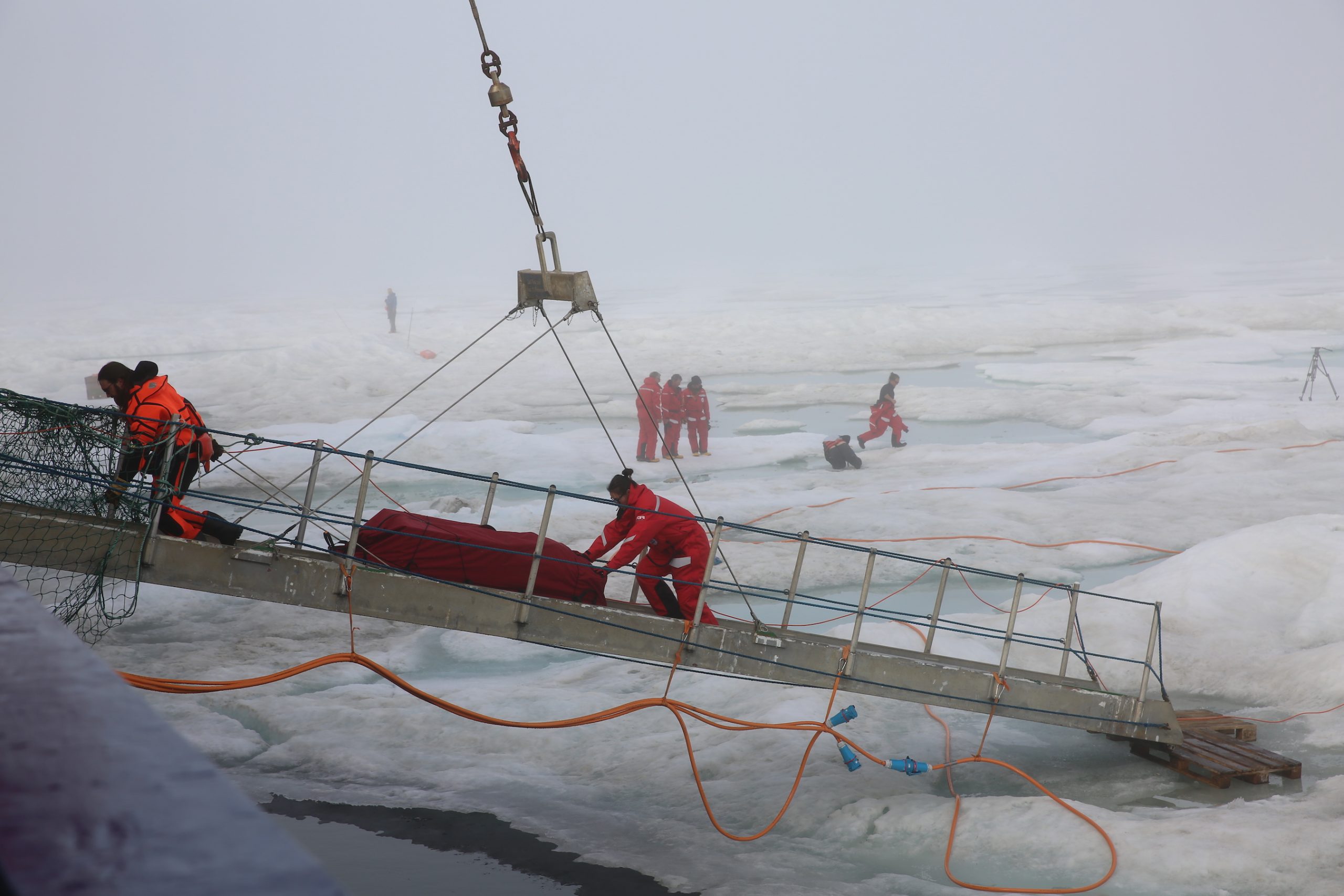by Matthew Shupe, CIRES/NOAA scientist and co-coordinator of MOSAiC
Yesterday the decision was made to start taking down the major infrastructures on the ice. The ice edge is now about 10 nautical miles away and we drifted about 7 nautical miles over the previous day. At this point, any major swell could totally destroy our floe. And so today we implemented another major transition for MOSAiC.

All groups ventured out to their respective cities for potentially the last time, at least during scientific operations on this floe. The Met City team did an amazing job of taking down a large collection of installations and all worked together so well during the process. Skidoos pulling sled after sled along our tenuous tracks through slush and water. Over our bridges that have been extended in length to reach, just barely, across rapidly increasing spans. Maybe 15 sleds full of gear. The take down was exciting in many ways, especially lowering the met tower. It was installed up on a ridge, and then of course the snow and ice has melted out all around it, such that it was really up on an ice tower. And just below the tower we had ablation shields to minimize melt. The ice underneath was so slippery. Without the direct sun to soften the surface, the ice was smooth and shiny. So the last removal of equipment was quite challenging. And then there was the lowering of the tower…. The most challenging part of the day. It’s heavy. And up on a slippery column of ice. Lastly, the “down” position of the tower was now well below grade at the tower base. We never really practiced this type of tower take down! And it was hard. 8-10 people straining and trying to keep everything in control. In the end, we made it down with no major mishaps, but a lot of hard work. Then stripping the instruments, packing them in boxes, and schlepping it all to the ship where we had another team, especially the ship’s crew, waiting to lift it all onboard. What a slick operation. And within about 10 hours, almost the whole science installation on the floe was now back onboard the ship.
Wow? The end of an era. This highly successful relationship we’ve had with the MOSAiC ice floe is now starting to come to an end. It feels strange to me. I’ve actually been in a pretty bad mood because of it. Done too soon. We were not able to be with this floe for the full year. That was one of our main goals, and that part has not been achieved. But in many ways the expedition has been a tremendous success thus far, and this leg of the mission has been particularly productive scientifically. Going forward we are developing good plans to best capture the onset of the freeze up season. This will bring closure to the year but only at a somewhat different location. So for now, we prepare to say goodbye to this floe as it soon transitions into becoming the North Atlantic Ocean.


